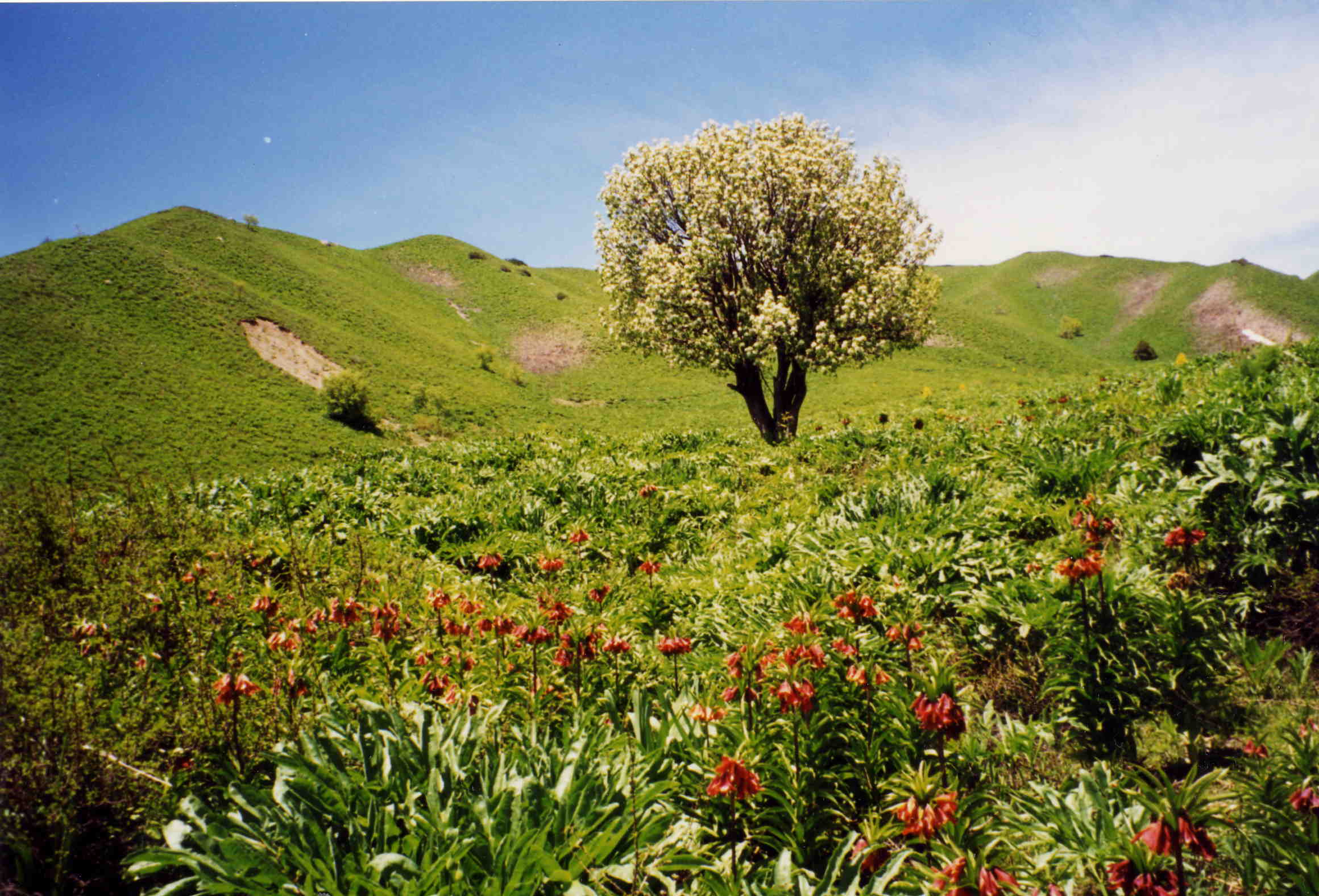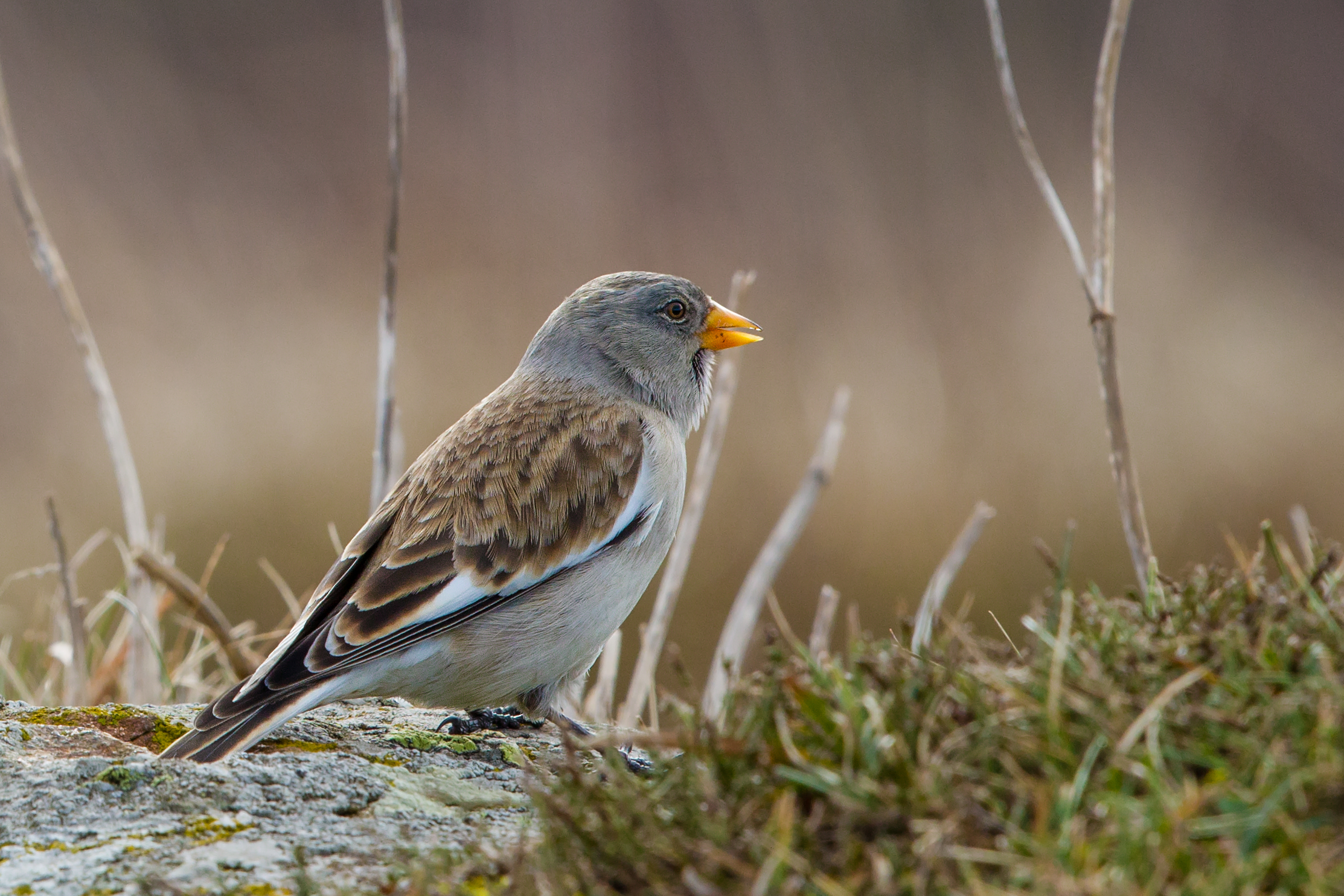|
Great Pamir
The Great Pamir or Big Pamir is a U-shaped, grassy valley (or pamir) forming the eastern part of the Wakhan Corridor in northeastern Afghanistan, in the Pamir Mountains. The area is home to a diverse range of animals and has traditionally been used as summer pasture by Wakhi and Kyrgyz herders. Geography The Great Pamir is part of the Pamir Mountains, consisting of the primary range of high mountains and the plateau at the western end of the Pamir Knot. It constitutes the eastern portion of the Wakhan Corridor, a narrow strip of mountainous terrain in northeastern Afghanistan situated between Pakistan and Tajikistan. The valley is long and bound to the north by the Southern Alichur Range and to the south by the Nicholas Range and the Wakhan Range. Lake Zorkol lies at the northern edge of the Great Pamir. Human and animal activity Wakhi and Kyrgyz herders use the Great Pamir for summer pasture. Side valleys support populations of Marco Polo sheep, snow leopard, ib ... [...More Info...] [...Related Items...] OR: [Wikipedia] [Google] [Baidu] |
Pamir (valley)
The Pamir Mountains are a range of mountains between Central Asia and South Asia. They are located at a junction with other notable mountains, namely the Tian Shan, Karakoram, Kunlun, Hindu Kush and the Himalaya mountain ranges. They are among the world's highest mountains. Much of the Pamir Mountains lie in the Gorno-Badakhshan region of Tajikistan. Spanning the border parts of four countries, to the south, they border the Hindu Kush mountains along Afghanistan's Wakhan Corridor in Badakhshan Province, Chitral and Gilgit-Baltistan regions of Pakistan. To the north, they join the Tian Shan mountains along the Alay Valley of Kyrgyzstan. To the east, they extend to the range that includes China's Kongur Tagh, in the "Eastern Pamirs", separated by the Yarkand valley from the Kunlun Mountains. Since the Victorian era, they have been known as the " Roof of the World", presumably a translation from Persian. Names and etymology In other languages The Pamir region is home t ... [...More Info...] [...Related Items...] OR: [Wikipedia] [Google] [Baidu] |
Wakhan Mirdom
The Mirdom of Wakhan (), Principality of Wakhan (), or the Khanate of Wakhan () was a semi-independent Wakhi principality in Central Asia that existed until 1883. It controlled both banks of the Upper Amu Darya and was governed by a hereditary chieftain known as a mir, with its capital at Qal'ah-yi Panjah. Background Wakhan had existed since the time of the Sasanian Empire when it was subjugated by the latter in 224 until 651 when the authority there collapsed. They were also subjugated by the Hephthalites, the First Turkic Khaganate, the Tibetan Empire, the Tang dynasty, the Samanid Empire, and later many Turko-Mongol khanates until their eventual subjugation by the Emirate of Afghanistan and the Russian Empire in the late 19th century. History Establishment and early years Nonetheless, Wakhan's origin story is obscure. According to local tradition, in 1581 four brothers from Iran travelled to Badakhshan to spread the Isma'ili doctrine and eventually settled in the ... [...More Info...] [...Related Items...] OR: [Wikipedia] [Google] [Baidu] |
Valleys Of Afghanistan
Afghanistan, which is about two-thirds mountainous, contains many valleys. The majority of the valleys are located in parts of northeastern, central, southern and southeastern Afghanistan. The southeastern areas are wetter and are covered by forest with trees such as cypress, oak, populus, poplar, pine etc. The valleys are the most populated regions in the country, and much of the agriculture done takes place either in the valleys or on the high plains. Wakhan Valleys in the Wakhan include: * Sheghnan Valley * Ashava Valley * Darwaz Valley * Drayem Valley * Arsj Valley * Hnjab Valley * Farkhar Valley * Ishkamish District Valley (see Ishkamish District) * Khost i Fereng Valley * Samandan Valley * Andrab Valley * Khenjan Valley * Tala wa Barfak Valley (see Tala wa Barfak District) Southern Hindu Kush Southern Hindu Kush valleys include (among others): * Panj Valley Valley * Korm Valley * Panjdarh Nijrab Valley * Bandavol Valley * Eshpi Valley * Shishil Valley * Kepchaq Valley * ... [...More Info...] [...Related Items...] OR: [Wikipedia] [Google] [Baidu] |
Brandt's Mountain Finch
Brandt's mountain finch (''Leucosticte brandti''), also known as the black-headed mountain-finch, is a species of finch in the family Fringillidae. It is found in Afghanistan, Bhutan, China, India, Kazakhstan, Nepal, Pakistan, Russia, Tajikistan, and Turkmenistan. Its natural habitat is temperate grassland A grassland is an area where the vegetation is dominance (ecology), dominated by grasses (Poaceae). However, sedge (Cyperaceae) and rush (Juncaceae) can also be found along with variable proportions of legumes such as clover, and other Herbaceo .... References Brandt's mountain finch Birds of Mongolia Birds of the Himalayas Birds of Central Asia Birds of Tibet Brandt's mountain finch Brandt's mountain finch Taxonomy articles created by Polbot {{Fringillidae-stub ... [...More Info...] [...Related Items...] OR: [Wikipedia] [Google] [Baidu] |
Plain Mountain Finch
The plain mountain finch (''Leucosticte nemoricola'') is a species of finch in the family Fringillidae. Its natural habitat is temperate grassland, upland forest and rocky cliffs. It is a resident breeder across the Himalayas. Their color and patterns resemble house sparrows. Taxonomy The plain mountain Finch is from the domain Eukaryote, the class Aves, the phylum Chordata and the order Passeriformes. They are from the family Fringillidae. The birds are a part of the genus Leucosticte and from the species nemoricola. Description The Plain Mountain Finch is 14–15 cm long, weighs 18–25g, and has a slender build with long wings, a notched tail, and a short pointed bill. It features a buff brown head with tawny streaks, a beige neck, and pale brown around the eye and cheek. Its Mantle and back is dark brown with pale streaks, while its lower back is pale gray. The tail and wings are dark brown with buff-brown and white markings. Both males and females look alike, while ju ... [...More Info...] [...Related Items...] OR: [Wikipedia] [Google] [Baidu] |
Great Rosefinch
The great rosefinch (''Carpodacus rubicilla'') is a species of finch in the family Fringillidae. It is found in Afghanistan, Armenia, Azerbaijan, Georgia, Iran, Kazakhstan, Kyrgyzstan, Mongolia, Pakistan, Russia, Tajikistan, and Uzbekistan and east to China. Its natural habitats are tundra and temperate grassland. While past taxonomies treated ''C. r. severtzovi'' and two other subspecies as a separate species, the spotted great rosefinch (and called the nominate subspecies the "Caucasian great rosefinch"), they now usually considered subspecies of the great rosefinch. Four subspecies are recognised: *''C. r. rubicilla'' (Caucasian great rosefinch) - (Johann Anton Güldenstädt, Güldenstädt, 1775) - central and eastern Caucasus Mountains * ''C. r. diabolicus'' - (Walter Koelz, Koelz, 1939) - northeastern Afghanistan and Tajikistan * ''C. r. kobdensis'' - (Petr Sushkin, Sushkin, 1925) - southern Siberia, western Mongolia and northwestern China *''Spotted great rosefinch, C. r. ... [...More Info...] [...Related Items...] OR: [Wikipedia] [Google] [Baidu] |
White-winged Snowfinch
The white-winged snowfinch (''Montifringilla nivalis''), or snowfinch, is a small passerine bird. Despite its name, it is a sparrow rather than a true finch. Taxonomy In 1760 the French zoologist Mathurin Jacques Brisson included a description of the white-winged snowfinch in his ''Ornithologie'' based on a specimen but without specifying where it had been collected. He used the French name and the Latin ''Fringilla nivalis''. The two stars (**) at the start of the section indicates that Brisson based his description on the examination of a specimen. Although Brisson coined Latin names, these do not conform to the binomial system and are not recognised by the International Commission on Zoological Nomenclature. When in 1766 the Swedish naturalist Carl Linnaeus updated his ''Systema Naturae'' for the twelfth edition, he added 240 species that had been previously described by Brisson. One of these was the white-winged snowfinch. Linnaeus included a brief description, used the bi ... [...More Info...] [...Related Items...] OR: [Wikipedia] [Google] [Baidu] |
Brown Accentor
The brown accentor (''Prunella fulvescens'') is a species of bird in the family Prunellidae. It is found in Afghanistan, China, India, Kazakhstan, Mongolia, Nepal, Pakistan, Russia, Tajikistan, Turkmenistan, and Uzbekistan. Their natural habitat is Mediterranean forests, woodlands, and scrub, Mediterranean-type shrubland, shrubby vegetation. They breed between 3,300–5,100 meters of altitude.Sharma, Puja, and Gunjan Arora. "Brown Accentor Prunella fulvescens, a new species for Uttarakhand, and a review of its status in the Himalaya." They prefer drier habitats than other accentors. Description They can be identified by their white supercilium (broader behind the eye), blackish-brown mask, blackish-brown Covert feather, ear-coverts, yellowish breast, and yellowish belly. Males are larger than females. Mating and Breeding They are mostly monogamous, but polyandry has also been recorded. They are territorial during the breeding season, which begins in late May. They lay clutch ... [...More Info...] [...Related Items...] OR: [Wikipedia] [Google] [Baidu] |
Altai Accentor
The Altai accentor (''Prunella himalayana'') is a species of bird in the family Prunellidae. It is also known as the rufous-streaked accentor or Himalayan accentor. It breeds in the Altai Mountains of western Mongolia; it winters in the southern Tian Shan and Himalayan ranges. Taxonomy The Altai accentor was described by the English zoologist Edward Blyth in 1842 and given the binomial name ''Accentor himalayanus''. The Altai accentor is now placed in the genus '' Prunella'' that was introduced by the French ornithologist Louis Pierre Vieillot in 1816. The species is monotypic. This species, along with the alpine accentor, is sometimes separated from the other accentors into the genus ''Laiscopus''. Description This accentor is a relatively large member of its family, measuring 15-15.5 cm in length. It has a gray head, a white throat framed by black spots, and a chestnut-brown with dark streaks back and mantle. The upperparts are a paler shade of brown. The wings are rusty ... [...More Info...] [...Related Items...] OR: [Wikipedia] [Google] [Baidu] |
Wallcreeper
The wallcreeper (''Tichodroma muraria'') is a small passerine bird found throughout the high mountains of the Palearctic from southern Europe to central China. It is the only extant member of both the genus '' Tichodroma'' and the family Tichodromidae. Taxonomy and systematics In the past, there was some disagreement among ornithologists as to where the wallcreeper belongs in the taxonomic order. Initially, Linnaeus included it in the treecreepers as ''Certhia muraria'', and even when given a separate genus of its own, ''Tichodroma'', by Johann Karl Wilhelm Illiger in 1811, it was long included in the treecreeper family Certhiidae. More recently, it was placed in its own monotypic family, Tichodromadidae, by Karel Voous in the influential '' List of Recent Holarctic Bird Species'', while other authorities such as Charles Vaurie put it in a monotypic family called Tichodromadinae, as a subfamily of the nuthatch family Sittidae. In either case, it is closely related to the nut ... [...More Info...] [...Related Items...] OR: [Wikipedia] [Google] [Baidu] |
Himalayan Griffon
The Himalayan vulture (''Gyps himalayensis'') or Himalayan griffon vulture is an Old World vulture native to the Himalayas and foothills in North and Northeastern India, as well as the adjacent Tibetan Plateau. After the cinereous vulture (''Aegypius monachus''), it is the second-largest Old World vulture species, and among the world's largest true raptors. It is listed as Near Threatened on the IUCN Red List. It is not to be confused with the Eurasian griffon vulture (''Gyps fulvus''), which is a visually similar, sympatric species. Description The Himalayan vulture has dark brown greater covert feathers, tail and wing quills, but a pale buff uniform upperside and paler tipped inner secondaries; its legs are covered with buffy feathers and vary in colour from greenish grey to pale brown. The underside and under-wing coverts are pale brown or buff, almost white in some individuals. The whitish down on the head of immatures changes to yellowish in adults who have a long and ... [...More Info...] [...Related Items...] OR: [Wikipedia] [Google] [Baidu] |




